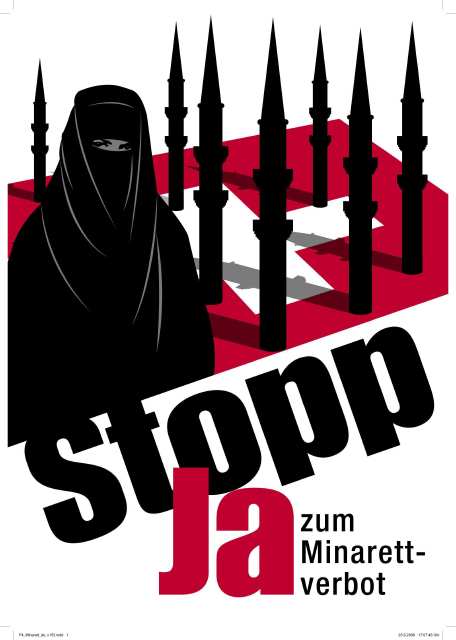
Earlier, I had written about how immigration is changing the face of Swiss football for the better. The country celebrated its first major FIFA title in 50 years when it’s U17 team beat Nigeria in the World Cup final.
The U-17 winning team most public face is Nassim Ben Khalifa, whose parents are Tunisian. His strike partner is Haris Seferovic, a Bosnian Muslim responsible for scoring the winner against Nigeria. Pajtim Kasami, an Albanian Muslim provides the muscle in midfield. The senior team that qualified for the 2006 World Cup was bolstered by the presence of Hakan Yakin and Gokhan Inler, players of Turkish origin.
Much like France whose former colonies provide the players who have brought their second country glory, immigrants from North Africa, Turkey, and Balkan countries where the population is predominantly Muslim are increasingly visible in the national teams.
But this openness goes only so far it seems especially if you are a Muslim. You are welcome to play football but where and how you pray is an entirely different matter. Last Sunday, Switzerland voted to ban minarets after reactionary forces painted them as symbols of radicalized Islam, therefore impending doom.
Oskar Freysinger, member of parliament for the Swiss People’s Party:
“The minaret is a symbol of a political and aggressive Islam. The minute you have minarets in Europe it means Islam will have taken over.”
The far right and even moderate Swiss are making a mountain out of a minaret. Exactly four of them.
I grew up in India, where millions including the Swiss come to see and admire the Taj Mahal, that masterpiece of Islamic architecture. It is one the most enduring symbols of love in the world. The emperor Shahjehan built the Taj for his wife Mumtaz Mahal, whose tragic death after giving birth to one of their many children left him grief stricken. Surrounding the mausoleum, on its four corners, are four soaring minarets.
The minaret has been a venerable form of Islamic architecture for centuries and their form has been co-opted by different forms of architecture throughout the world. Far from the zealotry or religious hegemony that the Swiss fear.
Minarets as this article points out have gone through several changes blending in with the natural architectural landscape in several instances. It’s presence can mean a separation from the dominant culture but it also can be construed more comfortingly, as a symbol of assimilation, in that it is in public view amongst other buildings of worship and public spaces. For a country that prides itself as a secular nation, the correct interpretation should be the second one.
Banning the minaret or literally cutting it down to size seems to be fall into the group think that this will diminish religious ardour. Not so. In fact, the invisibility introduces the dichotomy of living in another country and being its public representatives in a national sphere; at the same time, creating a defensiveness in their private realm. It can have the opposite effect, generating a rift, a tension between the minority and the dominant culture that can be exploited to radicalize a community.
The 400,000 Swiss Muslims are considered to be amongst the most tolerant in the European continent, most of them eschewing overtly religious symbols like the burqa or calling for Sharia. They offer prayers in abandoned warehouses and factories away from the public eye.
“I think Swiss Muslims will be angry and bitter over this,” said Reinhard Schulze, professor of Islamic Studies at Berne University. “And we know that anger and bitterness among a community can lead to radicalization, even to militancy.”
I wonder how long before having Ben Khalifa, Seferovic, Kasimi, and Hajrovic’s presence in the national team becomes an election issue with the same people pushing for the minaret ban. Perhaps when they stop winning. Les Bleus is the favourite whipping boy of Jean Marie Le Pen used to drum up support for his anti immigration National Front. In 2002, they shocked the French population by winning 17% of the total vote. The Swiss People’s Party is much more powerful and the minaret ban is already galvanizing far right extremists of different religious and cultural persuasions beyond its borders.
The Swiss have produced architects like Le Corbusieur, whose utilitarian and globe trotting ways brought urban planning to the fore. Surely, they can settle this in a pragmatic and thoughtful way without resorting to this radical step.